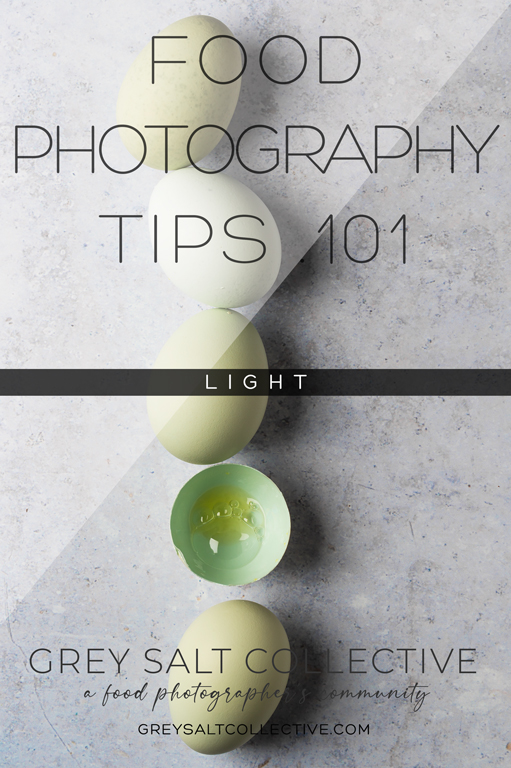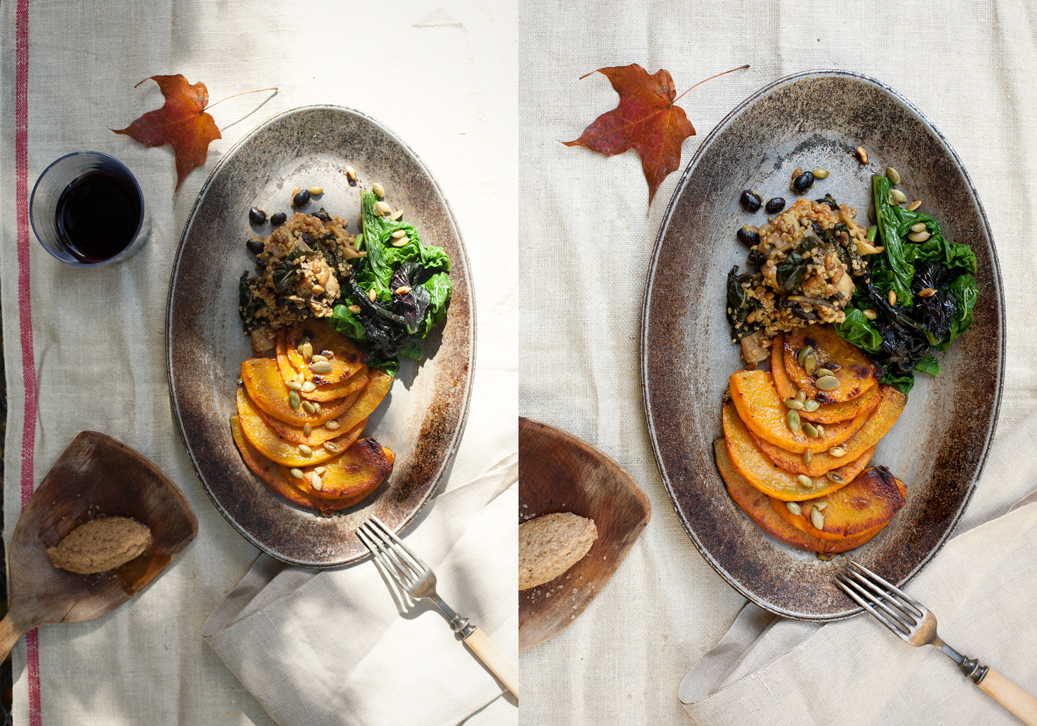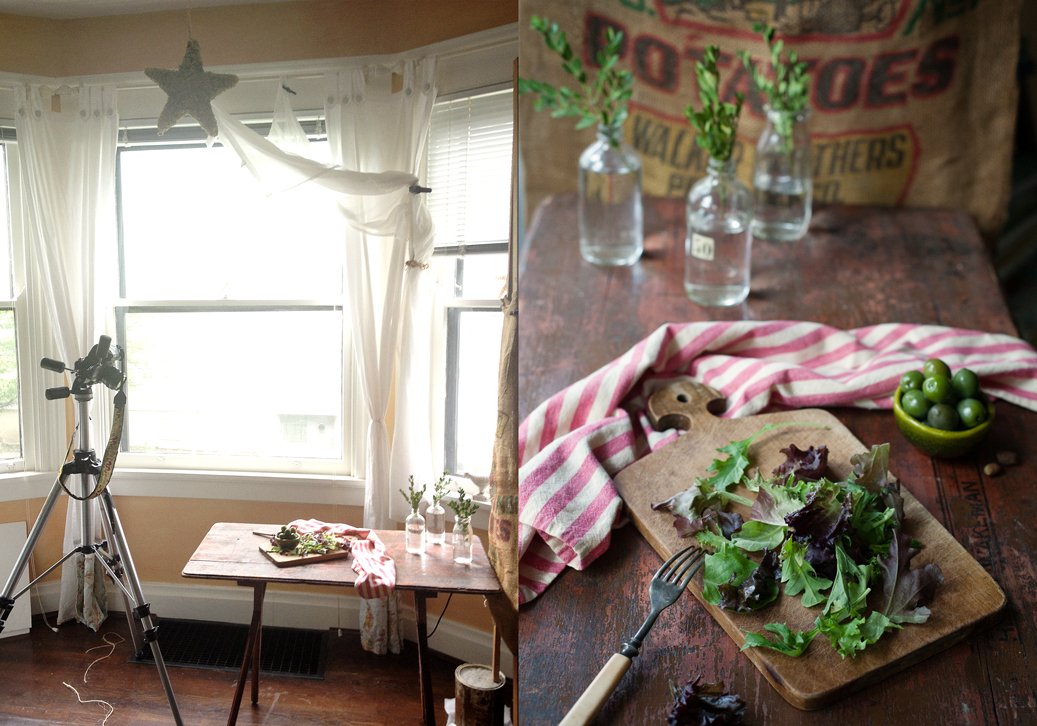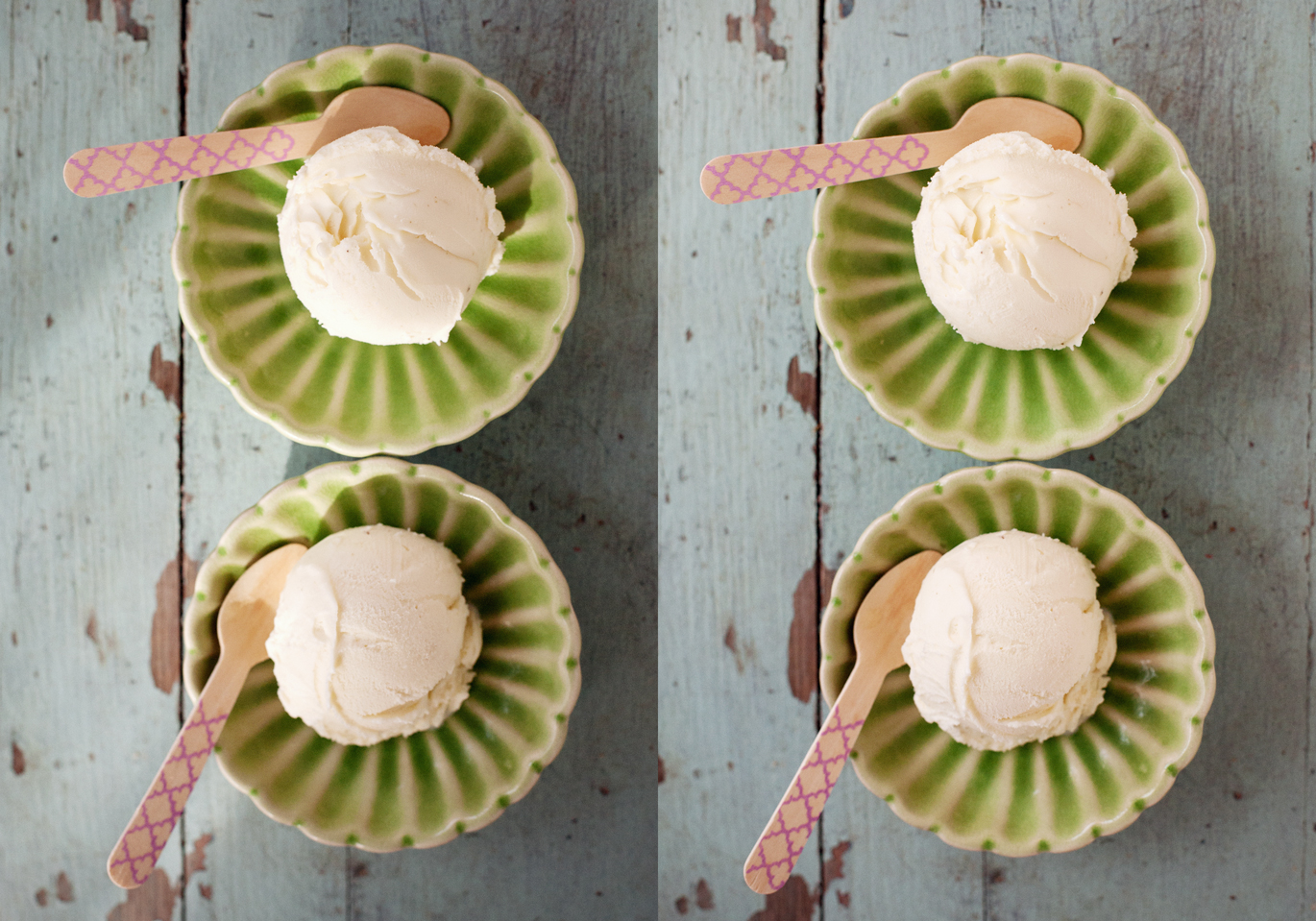
If you’re a food photographer at the beginning of your journey, a food blogger who may be more food writer than photographer, a chef needing to keep your social media content up, or a foodie just wanting your food photos to look better – let me share some quick natural lighting tips with you for taking better food photographs.
First, a quick note about your camera.
Start with whatever camera you have, even the one most of have with us at all times, our camera/phone. You can always move up in equipment, but if you don’t know how to work with and understand light, it won’t matter much.
Second, a quick note about shooting with natural light.
There are different qualities of light from soft to hard. There are also different colors of light. The time of day, season, environment and even where in the world you live all have an effect on the quality and color of light. It’s a topic on it’s own, and light is light, but it is also not all the same.
Here we go with some quick tips:
- Look for areas indoors (home, restaurant, barn, etc.) that have soft, even, indirect natural light coming in through a window or door, vs. areas that are harshly lit with direct bright sunlight pouring in through a window or door with no curtains or blinds, casting hard shadows on the ground – this is not what you’re looking for.
- If you’re outdoors, look for shaded areas, again where the food will not be in direct sunlight. Overhangs, the shaded sides of buildings or streets, just inside door/garage openings, just past any direct sunlight, are good choices.
- Turn off all the artificial lights (if possible) around you, as they can add unwanted color casts to your food.
Color casts can also come from your surroundings – the color of your walls, your clothing, colorfully painted buildings (if you’re outside) and even an overhead canopy of green leaves.
Look for the most neutral of environments inside or out. - Turn off your phone or on-camera flash.
The flash is hard, direct light (which you are avoiding), and the front lightning direction from the flash removes any dimension by filling in all the shadows, creating a flat, one dimensional image. - Light from the side.
Place your food/dish so that the light is hitting it from the side, and position yourself so that you are taking the photo from the front of your dish.
The side lighting will create soft shadows and depth, and highlight all the beautiful textures of your food. - If the only light around you is too bright, or is direct, harsh sunlight, you’ll need to diffuse (or soften) it by placing a light softening material, such as a sheer curtain, sheet, translucent paper, or the like, between the bright light and your food, effectively cutting the harshness from the light, giving you softer light.
READ THE CAMERA ANGLES POST + DOWNLOAD THE FREE PDF
Here are a couple of visual examples for you.
The first example was set up outside, and shows the effect of using a diffuser in a harsh lighting and dappled situation.
The image on the left shows the plated dish in dappled/full direct light with no diffusion.
The image next to it is in the same location, but diffused with a sheer disk being held above the food, in between the sun and the food, removing the harsh shadows caused by the direct sun.

The next set of examples shows an indoor set up.
In the first set of images, the image on the left shows the initial set, with no diffusion at the window, and full light hitting the table from the left side.
Though it is not hard direct sunlight, it’s still much too bright, as you can see from the light on the table.
The image next to it, shows a close up of the same table, after the addition of a sheer diffuser (a mesh curtain panel) at the window, cutting back some of the light, creating softer lighting.

Though the light is now nice and soft, most of it is hitting the side closest to the window, the left side, leaving the right side of the salad quite dark.
In a similar situation, simply use a reflector – like a small piece of white board or foam core (you can easily bend it in half so it stands on it’s own) or even the white side of a menu (if you’re in a restaurant) or even drape a white cloth napkin up over a dark menu – to bounce light back on to your food.
In the example below, the reflector is placed on the right side of the salad, facing the opposite side of the light source (here, the window), catching the light, bouncing it back onto the darker areas of the lettuce leaves, opening up the shadows.
You can adjust by moving the reflector closer to the food if you want to open up the shadows more, or farther away if you want to deepen the shadows.

This last set of images of ice cream shows another example using the same set up as the salad above.
The image on the left shows no diffusion in between the light coming in through the window and the table, compared to image on the right, adding in the sheer mesh curtain between the window and the table.
A bounce card was also placed to the right of the ice cream dishes, opposite the window (light source), to kick in just a little more light opening up the shadows of both the table surface, and right side of the ice cream.

Take your time and learn to recognize the different qualities of light.
I encourage you to take multiple images with all the variations so you can compare them for yourself.
In no time, you will learn to see beautiful light everywhere, and know how to modify it if it’s not!
IF YOU’VE MISSED ANY OF MY PREVIOUS TIPS, CLICK RIGHT HERE.
CLICK THE IMAGE to DOWNLOAD A PDF of this post





5 Comments
Dear Gretchalina, thank you for your fist article about food photography. It is really interesting and useful. It was pleasure to read and look over your pictures. Looking forward the story continuation.
Thank you sooo much for this blog post! Even as an experienced photographer I still have things to learn and this was a great example! Thank you!
Thank you both Katya and Nichole;) I’m glad both of you enjoyed this little blog post. I love sharing what I know, or at least how I approach things, and hope that it is helpful to anyone who is interested, and I’m looking forward to sharing many more little tips!